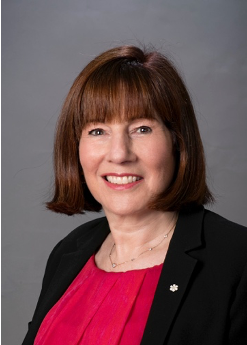
It’s the beginning of a new year, and a new decade: a time for making resolutions, setting goals, and considering how well we have done keeping old resolutions and meeting earlier targets.
The Canadian Association for Community Living made its first commitment to inclusive education in 1987 when it adopted Community Living 2000, a vision for the year 2000, which contained several 5-year goals. One was that “by 1992, all children will go to school together with other children in the neighbourhood and have an age-appropriate program to match their needs in regular school classes.”
This was an ambitious goal! We did not reach it in 1992 and we still are working toward it in 2020.
It’s easy to get discouraged particularly when we look across Canada at the number of children with disabilities who are still excluded from regular classes and their neighbourhood schools. Many of the individual families facing this reality find it difficult not to despair. But victory has never been achieved by those who gave up. If one obstacle is impenetrable, another more vulnerable one must be found. If there are too few people engaged in the fight, new allies must be found to join in the effort.
If we look carefully at the current struggle for inclusion, there are some glimmers of hope. When CACL began its crusade, we were a lone voice in the wilderness. Few teachers, government departments, school boards or teacher training programs supported us. It took some time even for our sister organizations in Inclusion International to adopt a common objective. The perspective of other disability groups was antagonistic, and when the negotiations of the text of the Convention on the Rights of Persons with Disabilities (CRPD) began in 2000, the priority of most other groups was to protect their “special schools”.
However, as the negotiations progressed, as the Disabled Peoples’ Organizations (DPOs) worked to understand each other’s perspectives, a shift occurred so that the final CRPD text called for “an inclusive education system at all levels”. Although there is still a lack of consensus on what such a system would look like and what the essential elements are, we increasingly find there is a demand from DPOs for inclusion. At the same time, multi-lateral institutions have recognized the failure of attempts to include excluded groups in education systems one group at a time. The benefits of developing systems that can accommodate all learners are increasingly clear. That has led international groups to make one of the Sustainable Development Goals to be: “to ensure inclusive and equitable quality education”. That means there is a grassroots ‘bottom up’ demand for inclusion from many DPOs, and a complimentary push from the ‘top down’ by UNICEF, UNESCO, the World Bank and others for inclusive school systems.
However, new allies have brought new challenges. While the goal of inclusive education was first championed for students with intellectual disabilities, and then for students with other disabilities, the current priorities of many government and funders are the inclusion of additional marginalized groups: girls, ethnic minorities, LGBTQ students, refugees. Unfortunately, that often means that the needs of students with disabilities, and especially intellectual disabilities, are ignored.
Looking back on the last quarter century, how should we feel? We are far from achieving our goal. But we are also very, very far from where we began our struggle. We have many more allies helping us to achieve success. We have new tools to draw on. This is the time to reflect on our progress, analyse our strategies, and fuel our forces for the challenges ahead. Inclusion ho!
Diane Richler, C.M. is a member of the Order of Canada. She was executive vice-president of CACL when Community Living 2000 was adopted. She subsequently served as president of Inclusion International before becoming chair of the International Disability Alliance. She is a Joseph P. Kennedy, Jr. Foundation International Fellow and was one of the civil society leaders in the negotiation of the United Nations Convention on the Rights of Persons with Disabilities. Diane has played a leadership role in strategies to promote inclusive education, close institutions and develop inclusive social policies. She has been an invited speaker in over 50 countries and served as a consultant to governments and the World Bank, UNICEF, UNESCO, and the Organization for Economic Cooperation and Development (OECD). Diane lives in Toronto.
